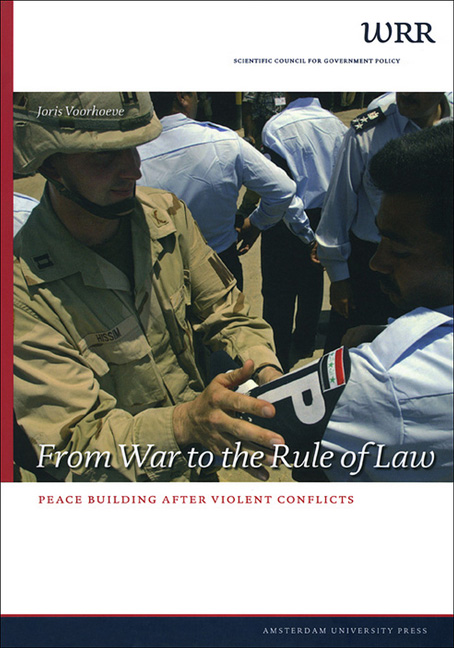Book contents
- Frontmatter
- Dedication
- Contents
- Preface
- 1 Why this Study?
- 2 An Overview of Peacebuilding
- 3 Towards Typology and Theory
- 4 (Re) Establishing Order
- 5 (Re) Building the Rule of Law
- 6 Resources and Costs
- 7 The European Union and Post-Conflict Peacebuilding
- 8 Conclusions and Recommendations
- List of Country Illustrations, Tables, Text Boxes and Maps
- Acknowledgments
- Further Reading
- Some Relevant Websites
4 - (Re) Establishing Order
Published online by Cambridge University Press: 14 January 2021
- Frontmatter
- Dedication
- Contents
- Preface
- 1 Why this Study?
- 2 An Overview of Peacebuilding
- 3 Towards Typology and Theory
- 4 (Re) Establishing Order
- 5 (Re) Building the Rule of Law
- 6 Resources and Costs
- 7 The European Union and Post-Conflict Peacebuilding
- 8 Conclusions and Recommendations
- List of Country Illustrations, Tables, Text Boxes and Maps
- Acknowledgments
- Further Reading
- Some Relevant Websites
Summary
As everything begins with physical safety and negative peace, i.e. the absence of war or the threat of massive political violence, restoring and maintaining basic public security is always the number one priority. People who have personally only experienced peace and watch gross injustices in other countries via the media often find this priority for safety difficult to appreciate. To many, justice seems the most urgent concern. But those who have lost beloved ones in war and are threatened by daily violence will put water, food, medical aid and a secure public order on the top of their agenda.
The crucial question, how to end civil war, is not the focus of this study, but is the subject of war and conflict management studies, diplomatic and mediation analysis and parts of international public law. Our analysis starts with the assumption that there is a cease-fire, that the war has ended, and that the country needs to be rebuilt.
After a cease fire, peace and order have to be maintained with military and police forces of national or international origin. Usually, violent criminals, looters and parts of the former warring parties abuse the lack of government power to commit heinous crimes in the lull after the war. A power vacuum invites a crime wave. The population, tired of the war, expects peace but often gets serious personal insecurity after major combat ends.
The measures for restoring stability and maintaining the peace are usually outlined as part of the cease fire agreement, or in the mandate of a peacekeeping mission, imposed by foreign powers with or without a UN Security Council mandate. Troops are then contributed by UN members on the basis of the UN Stand-by Agreement, or peacekeeping is mandated to another international organisation (NATO, AU, EU), or an ad hoc coalition of countries, usually with a UN mandate but sometimes without. Generally, it takes several weeks if not months before peacekeepers arrive. In the meantime, violent economic, political and other crimes rise rapidly.
Post-conflict peacebuilding may be compared to emergency medical care after a life-threatening trauma. There is often a ‘golden hour’, when medical intervention, or its absence, determines the chance of healthy survival. This may be the case with countries too, after a war.
- Type
- Chapter
- Information
- From War to the Rule of LawPeace Building after Violent Conflicts, pp. 53 - 90Publisher: Amsterdam University PressPrint publication year: 2007



